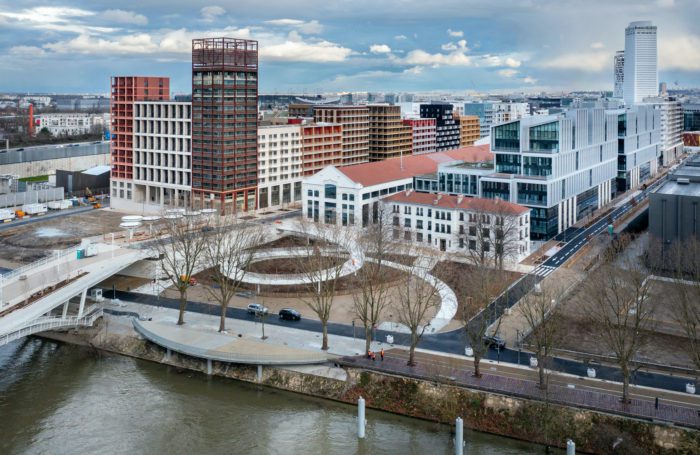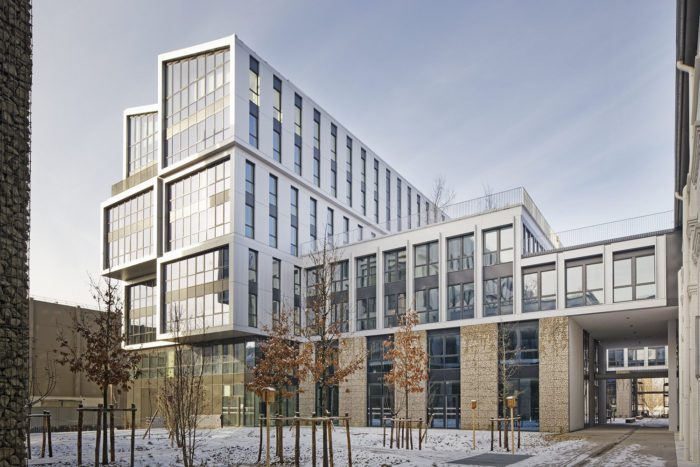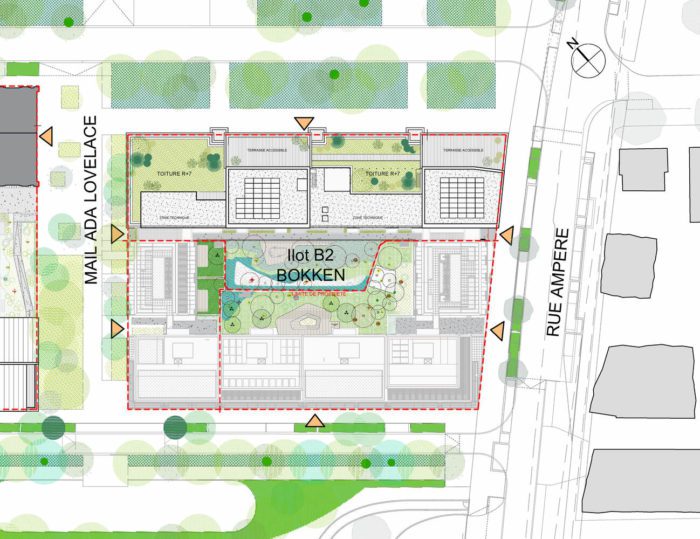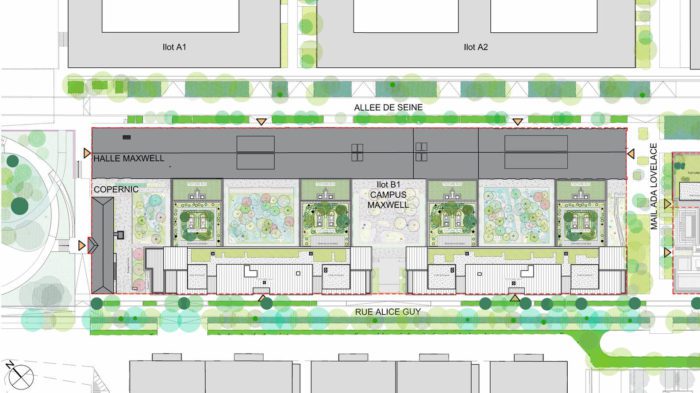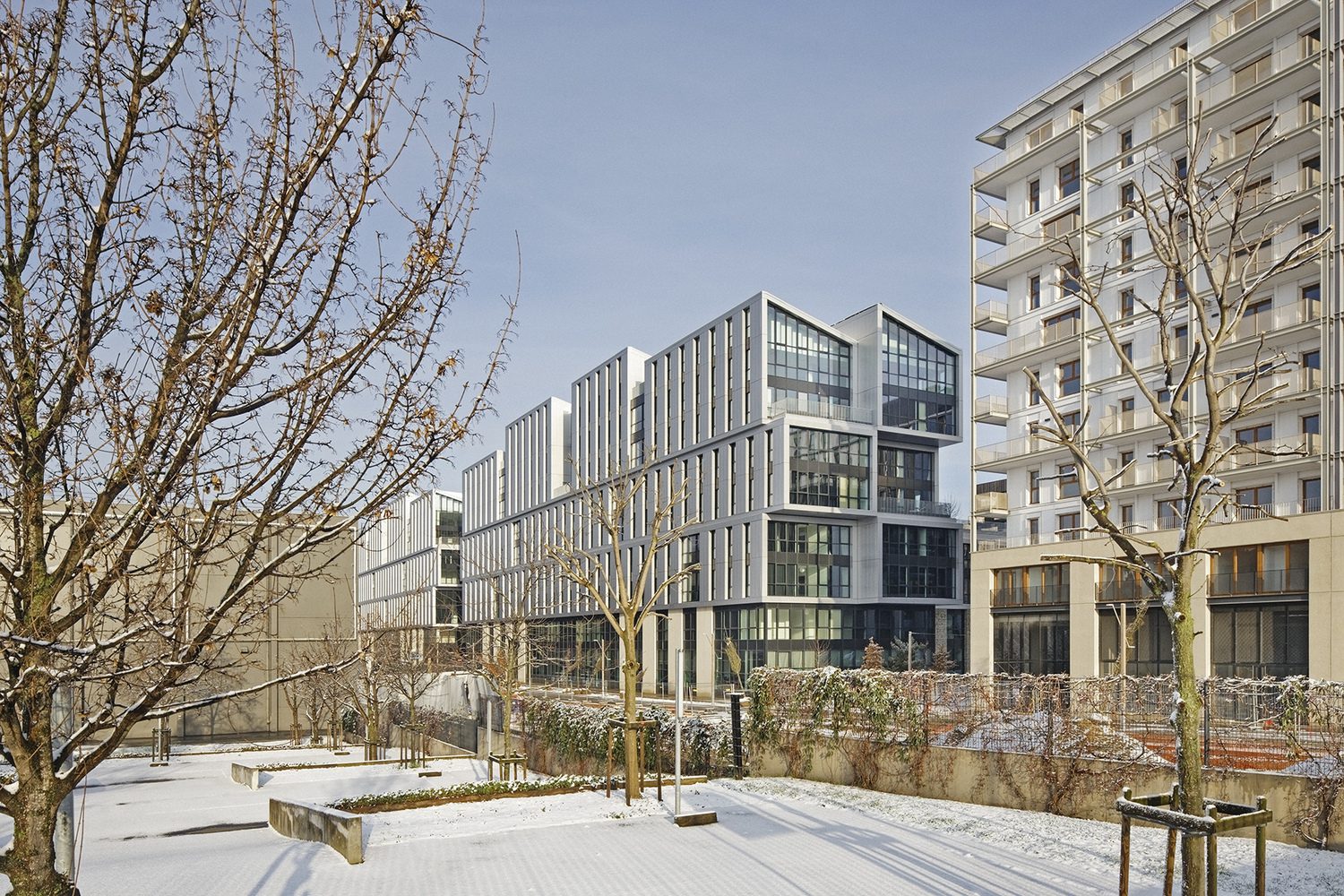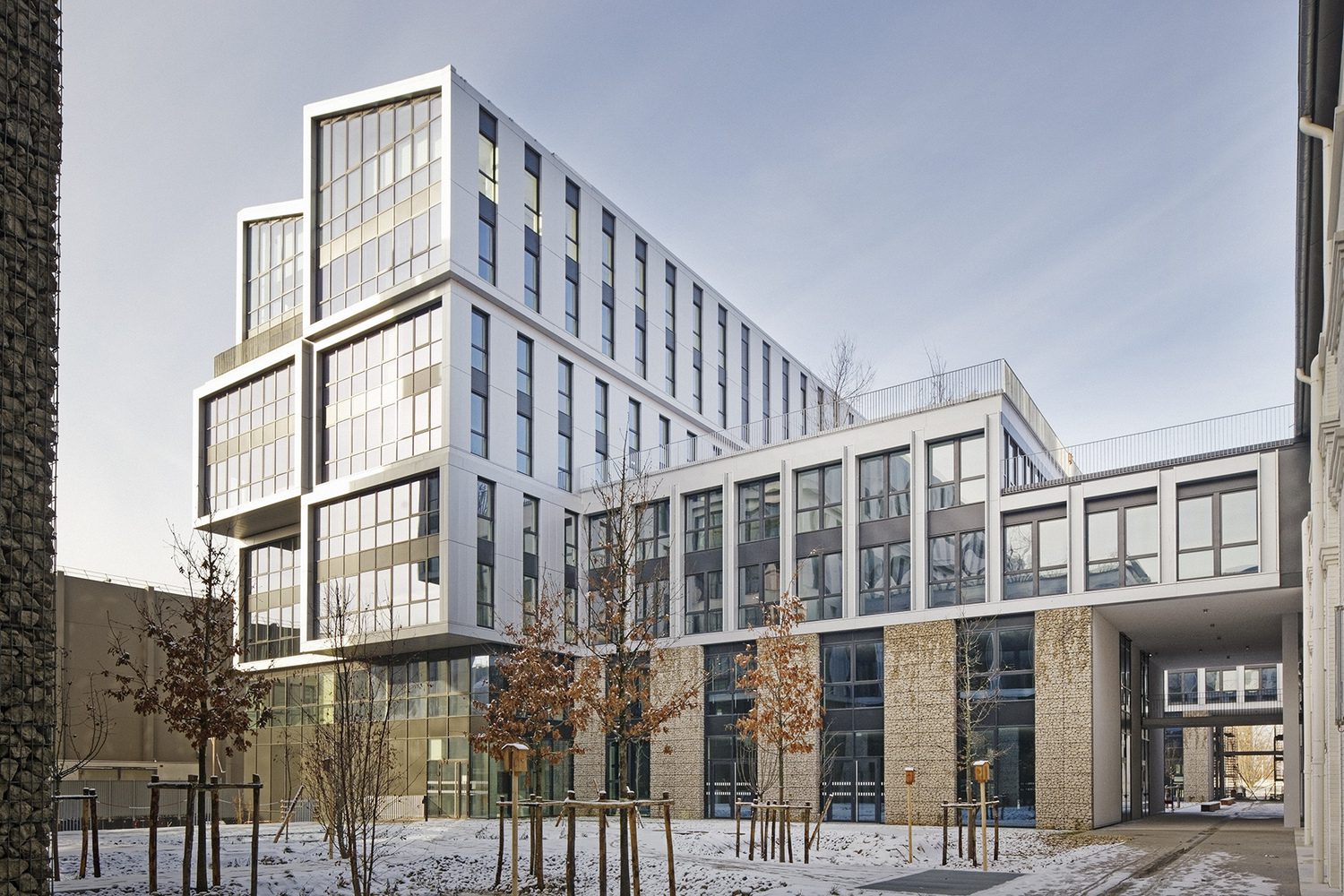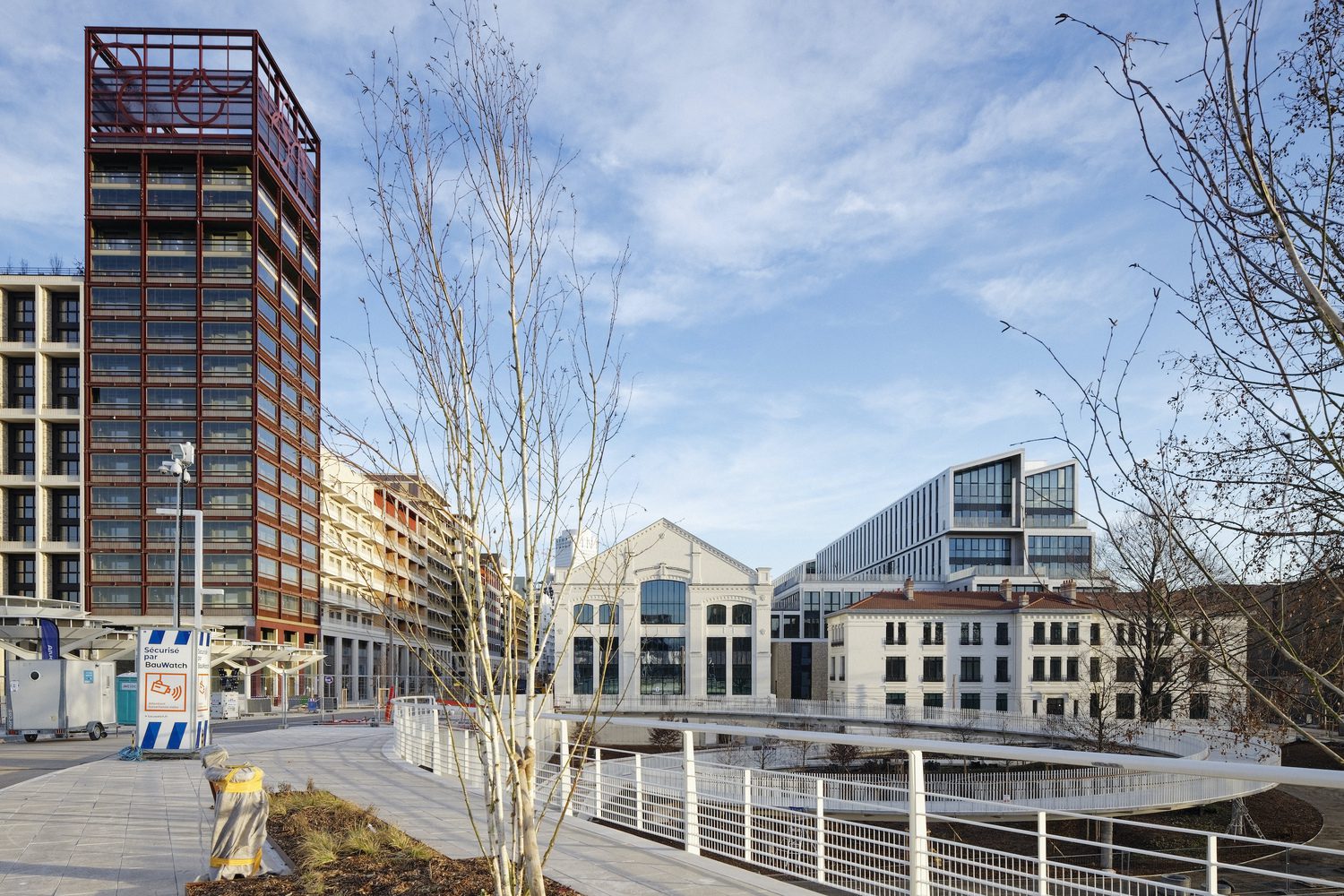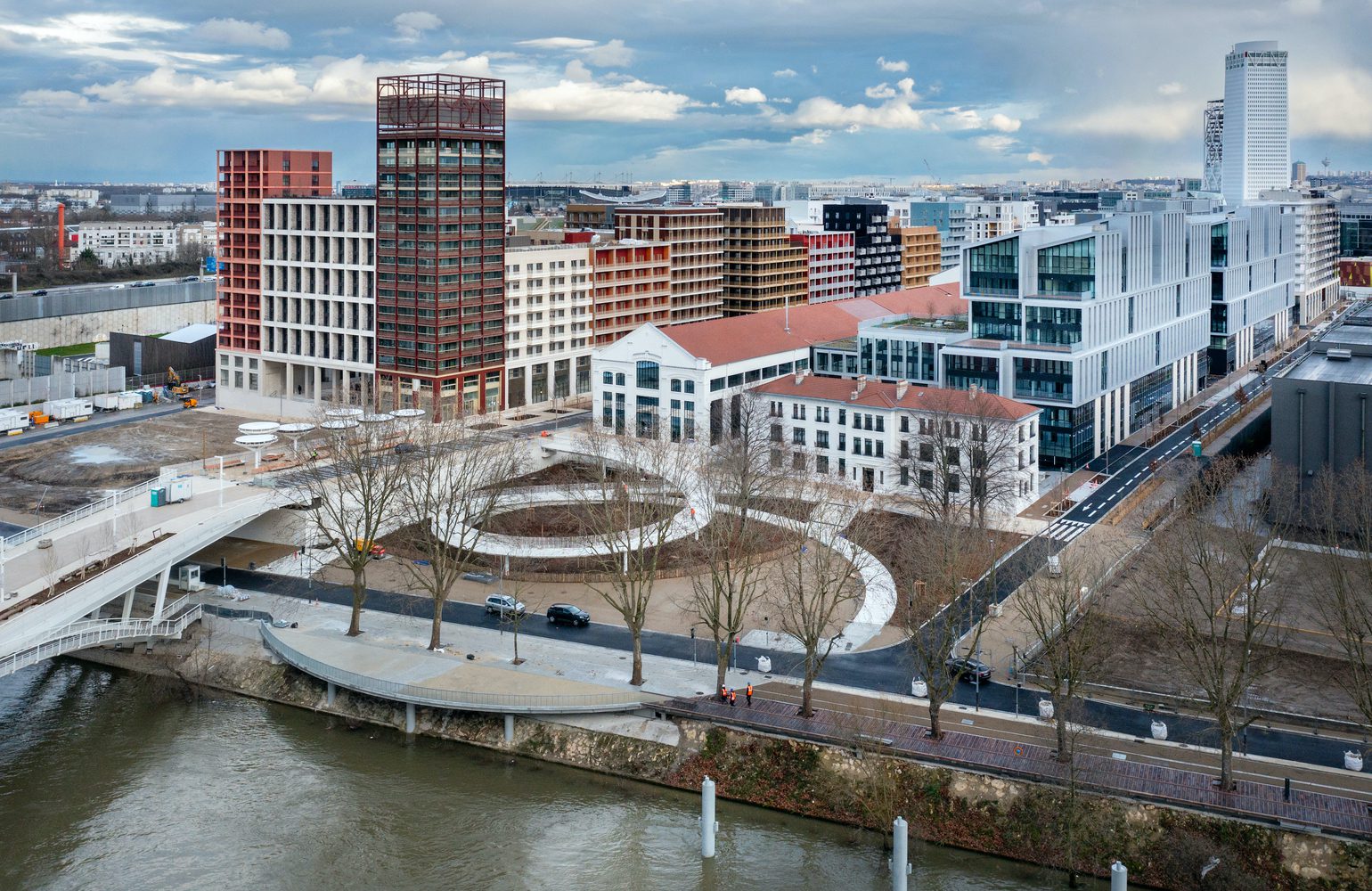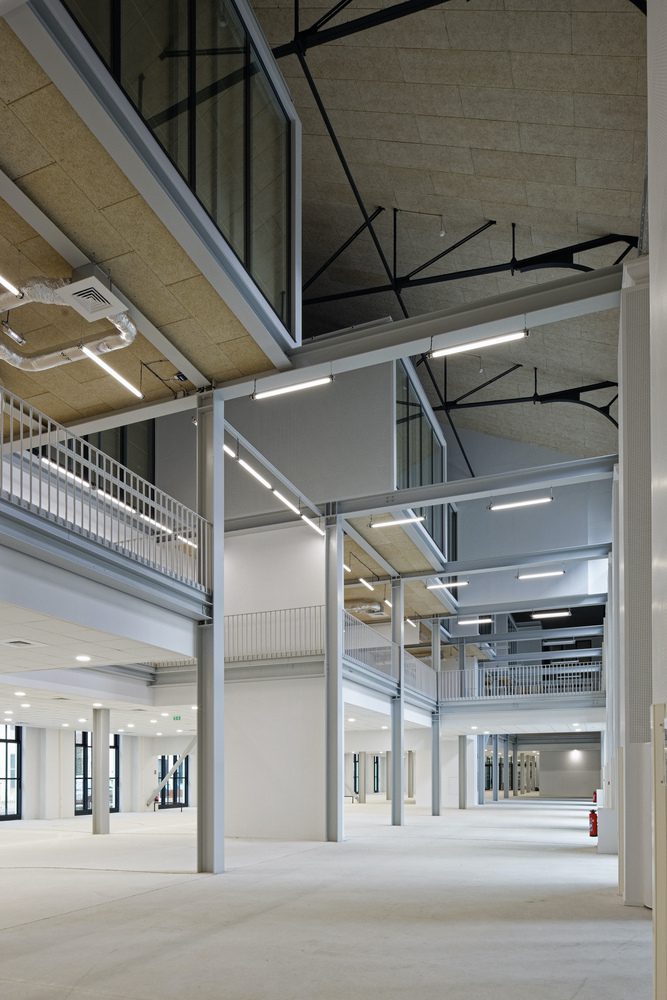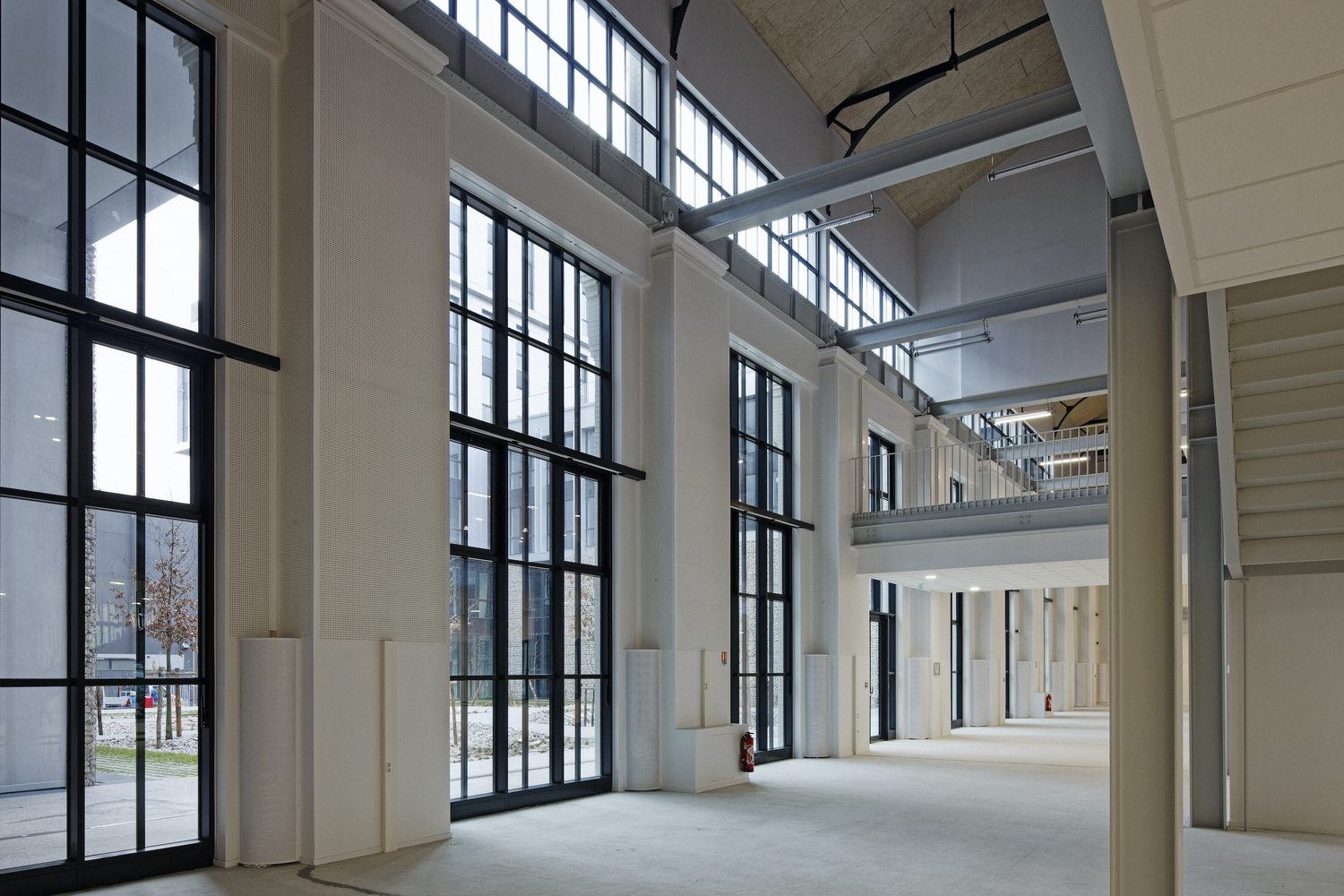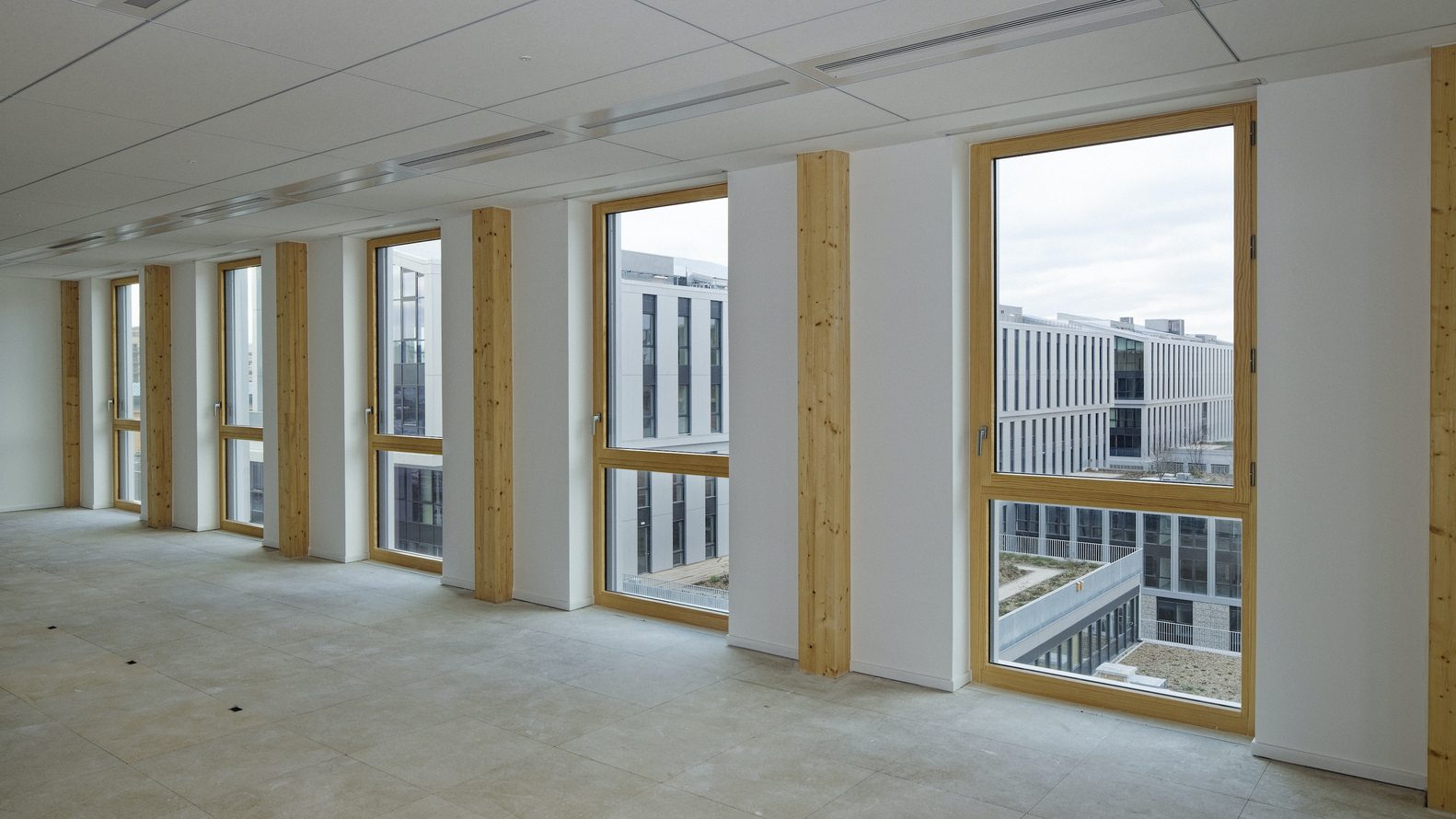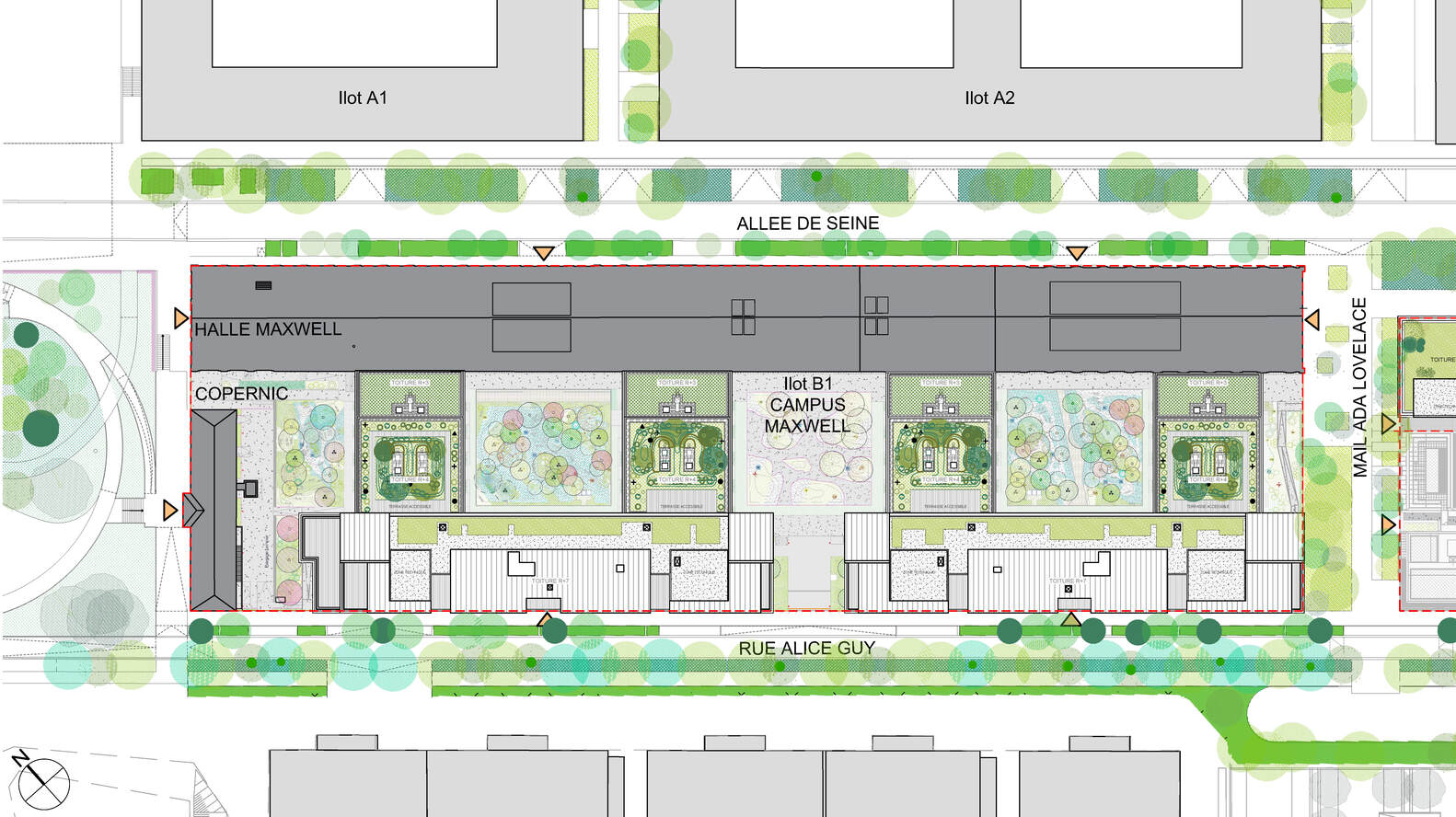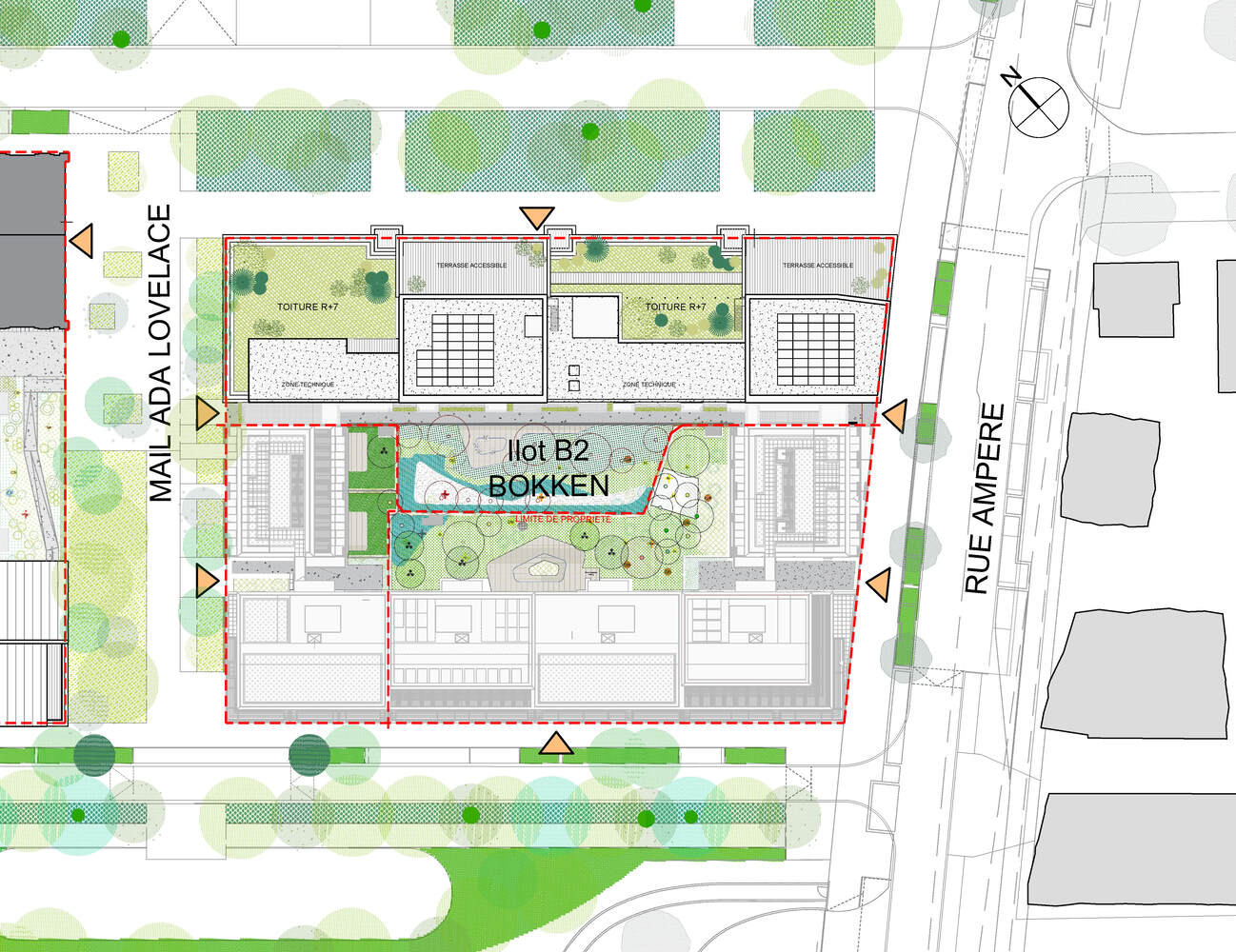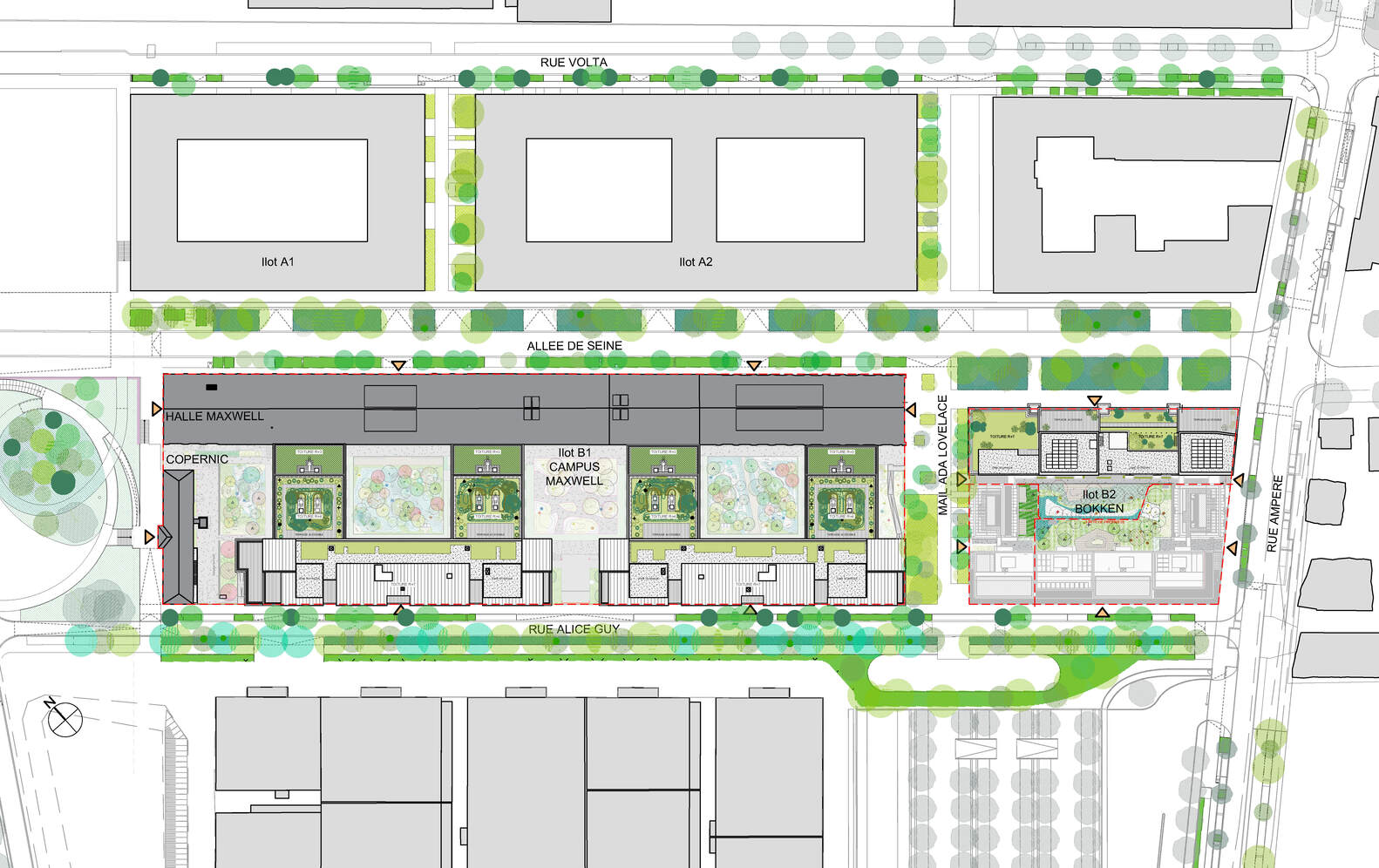Olympic Village Housing’s Design Concept:
In Olympic Village Housing, that chaixetmorel. realized together with real estate developer VINCI Immobilier, it was necessary to master the balancing act between preserving the existing building, creating suitable accommodation for the athletes, and then continuing to use it as offices for a ministry long after the athletes had left. Chaixetmorel. built a contemporary, innovative, and modern ensemble on an area of around 68,000m2 that houses apartments as well as service, training, and storage facilities. The architects succeeded in integrating the architecturally exciting industrial buildings from the beginning of the 20th century (the Maxwell Hall) and its engineering building (the Copernic Pavilion) into the new use.
The campus is structured around them, along a strong east-west axis that forms the heart of the new site. A timber hybrid construction method was used for the new buildings. Many existing materials were reused on site (e.g. demolition concrete in the wire ballast boxes of the new plinth zone) or were taken from demolished buildings elsewhere and given a new life cycle (e.g. raised floors in the office areas). The CO2 footprint was already reduced by around 40% compared to similar projects during construction and will also result in significantly lower energy consumption during future use – first as an Olympic village and later as office space.
The Eco district is located in the northern district of Saint-Denis, on the banks of the Seine, in the heart of an urban fabric that includes several remarkable industrial buildings, including a former power station (Halle Maxwell), industrial architecture from the early 20th century, as well as its engineering building (Pavillon Copernic). Residential and large-scale commercial buildings have been naturally integrated into this fabric, giving the district a harmonious mix of uses. The program complements the current dynamics of the Saint-Denis plain, which is currently undergoing a major transformation. The campus is structured around the Maxwell Hall, along a strong east-west axis that forms the backbone of the site. The two existing buildings have been renovated to match their original dimensions and colors. Entrances were created for the new business. The existing architectural heritage is thus preserved at the heart of the new campus and is an integral part of it.
The new buildings are characterized by sober, contemporary architecture that emphasizes qualities of use and innovation and underlines the dialogue between architectural heritage and contemporary architecture. Two new buildings with seven upper floors have been created along Rue des Frères Lumière. On the west side, the gables facing the Copernic building are set back: the fragmentation and recession allow for terraces and generous open spaces. Volumes with three upper floors that connect the buildings serve as connectors and also offer large, planted, and accessible terraces. Between these connectors, extensive gardens provide pleasant, sheltered outdoor areas.
The project’s planning also fulfills the ambitions of the city, which wants to use the Games to create social change for an even better quality of life with the creation of “sustainable, inclusive and intelligent spaces”. Sector B of the future Athletes’ Village, known as “Les Verrières”, will house a program of athlete residences and support functions (offices, storage, and service facilities) in the new B1A and B1B buildings. The Maxwell Hall and the Copernicus Pavilion, in contact with the Olympic Square, will house the service functions required by the Athletes’ Village: Reception and relaxation areas (fitness), delegation offices, NOC/NPC areas, etc. By creating a biodiversity corridor on three complementary levels, the quality of the whole ensemble is emphasized; these are open spaces in the inner courtyard, planted terraces, viewpoints and connecting roofs.
Project Info:
-
Architects: chaixetmorel.
- Country: Saint-Denis, France
- Area: 68000 m²
- Year: 2024
-
Photographs: Vincent Fillon, Anne Claude Barbier
-
Manufacturers: AutoDesk, Acelor Mittal, Meo


